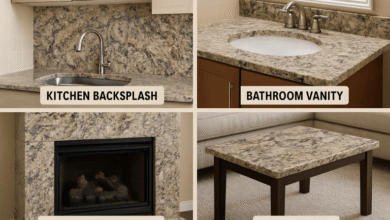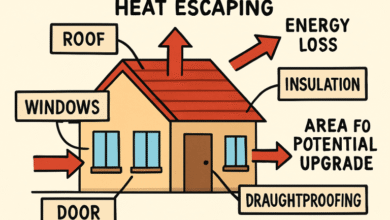Building Better Communities: Innovative Strategies for Modern HOA Management

Table of Contents
The Landscape of Community Associations Today
Homeowners associations now form the backbone of millions of American neighborhoods, with about 75 million Americans living under their governance—a number that continues to rise yearly. These associations often dictate the quality of daily life, with their responsibilities spanning everything from handling shared amenities and enforcing CC&Rs (covenants, conditions, and restrictions) to maintaining property values and resolving disputes.
As these communities’ numbers and complexity grow, so does the need for forward-thinking strategies and reliable management. Many associations today turn to experienced partners such as RowCal to help manage these intricate operations, ensuring compliance and order and a responsive, resident-focused approach.
The evolution of HOA management has been dramatic over recent years. While once limited to enforcing community rules and collecting dues, modern boards are expected to create thriving, sustainable environments while prioritizing homeowner satisfaction.
A successful HOA or condo association operates like a small municipality, requiring careful planning, transparent processes, and visionary leadership. This shift is spurring boards and management teams to embrace new practices, utilize professional expertise, and focus on cultivating a sense of community beyond the basics of governance and maintenance.
Transparency and Communication: Laying the Groundwork
Transparency is the foundation of any well-managed HOA, directly affecting how residents perceive fairness and accountability within their community. Boards that keep open records, publish meeting minutes, and communicate routine matters and major decisions encourage a strong sense of inclusion. For example, issuing monthly newsletters or running interactive online dashboards lets homeowners stay updated on budgets, maintenance schedules, and upcoming projects.
In communities where leadership makes an apparent effort to reach out and keep residents apprised of developments, there is significantly less friction and more collaboration when issues arise. Digital communication tools, such as dedicated HOA apps or online forums, are making it easier to keep everyone on the same page and allow residents to voice questions or concerns promptly.
Trusted, timely communication goes a long way in heading off minor issues before they become significant disputes and reflects a board’s commitment to openness.
The Role of Technology Management
Technology integration is revolutionizing how associations handle day-to-day HOA management, bringing efficiency, convenience, and a new expectation of immediacy from residents. Boards increasingly rely on cloud-based management platforms to track maintenance requests, handle billing, broadcast announcements, and even facilitate digital voting. This evolution saves invaluable time for volunteer leaders, freeing them up to focus on strategic planning and resident relations.
Homeowners, for their part, are embracing these advances as they can conveniently pay assessments, submit service requests, and access records through intuitive apps or association portals—often from the palm of their hand. The New York Times recently highlighted this digital transformation, noting a growing shift among communities eager to meet heightened expectations for speed, accessibility, and real-time engagement.
When effectively deployed, technology levels the playing field for residents and board members alike, ensuring that critical information is never more than a tap away.
Financial Stability: Planning for the Future HOA
Long-term financial health is essential for the stability and growth of any association. Preparing detailed budgets, maintaining adequate reserve funds, and reviewing expenditures transparently can help associations weather unexpected challenges while planning for significant improvements or repairs.
Open financial practices, such as making budget documents accessible, holding regular audit meetings, and offering annual financial reviews, reinforce confidence among homeowners. Proactive boards frequently engage professional accountants or reserve study specialists, who provide unbiased guidance to ensure that funding aligns with current needs and future goals.
Associations prioritizing robust fiscal management tend to minimize the risk of contentious special assessments, protect property values, and demonstrate responsible leadership. Successful financial planning means addressing residents’ concerns about surprises, fostering a greater sense of security, and shared investment in the community’s well-being.
Boosting Community Engagement
Actcommunity’s sentiment is the heartbeat of any dynamic association. When boards invest in regular events, support volunteer initiatives, and foster opportunities for neighbors to interact, they lay the groundwork for a vibrant, cohesive atmosphere.
This might involve organizing seasonal festivals, neighborhood beautification days, or educational seminars tailored to resident interests. Encouraging the formation of committees—on topics such as landscaping, social activities, or safety—gives every resident a meaningful chance to participate in association life.
High levels of engagement have proven benefits: research shows that communities with robust social activity experience fewer conflicts and considerably higher satisfaction and resident retention. Even simple acts, like sending thank-you notes to volunteers or spotlighting residents’ achievements in newsletters, can make individuals feel heard and appreciated.
Safety and Compliance: Protecting Residents’ Interests
On the most fundamental level, associationists help create safe, orderly environments. This requires vigilant attention to both security and compliance with governing documents. Boards must regularly update safety protocols, evaluate the effectiveness of systems like lighting and cameras, and offer fire prevention, emergency procedures, and crime prevention training or reminders.
A fair, transparent approach to enforcing rules—that treats all residents equally— minimizes tension and shows a dedication to mutual respect. Proactive boards educate residents about community standards, ensuring everyone knows what’s expected before violations occur.
Conducting routine inspections, soliciting input on new rules, and swiftly addressing issues sustains a culture of safety and cooperation, ultimately safeguarding all quality of life.
Using Data to Drive Decisions
Data-driven decision making is rapidly becoming the gold standard for effective HOA management. By evaluating statistics such as maintenance turnaround times, violation trends, budget shortfalls, or satisfaction surveys, boards gain actionable insights into what’s happening within the community. With this, resources can be allocated more precisely, performance can be benchmarked year-over-year, and persistent issues can be resolved with clarity and focus.
Many associations now use visual dashboards or annual reports to communicate progress and challenges, making the connection between board actions and community outcomes more transparent. This emphasis on data increases operational efficiency and helps associations demonstrate value to skeptical or concerned residents by backing up decisions with hard evidence.
Future Trends: What’s Next for HOAs?
Looking to the future, associations are adapting faster than ever before. Innovations like virtual reality walkthroughs for new construction, automated smart irrigation and lighting, and advanced communication systems are becoming more common, even in smaller communities.
Environmental consciousness is also reshaping landscapes, with many associations investing in drought-resistant plantings, solar panels, or electric vehicle infrastructure. Board meetings are increasingly held in hybrid or remote formats, ensuring more members can participate and have their voices heard.
According to industry-leading statistics, homeowners are placing growing importance on these flexible, tech-forward, and sustainable initiatives when choosing where to live. Adaptable associations that blend technology, inclusivity, and a long-term perspective are finding themselves at the forefront of this exciting evolution in community living.
See also: How to Optimize Your Amazon Product Listings for Explosive Sales
Final Thoughts
HOA management today is a blend of heritage and innovation, rooted in the tradition of service, but propelled by modern tools and fresh thinking. Boards and HOA management teams who prioritize transparency, foster engagement, steward finances wisely, and embrace technology will set the gold standard for success.
With the support of specialized partners and a commitment to lifelong learning, associations can create thriving neighborhoods where relationships are strong, property values are protected, and every resident feels right at home. Adapting to industry trends, making data-driven decisions, and keeping the door open for new ideas ensures a future where community living can be better for everyone involved.



